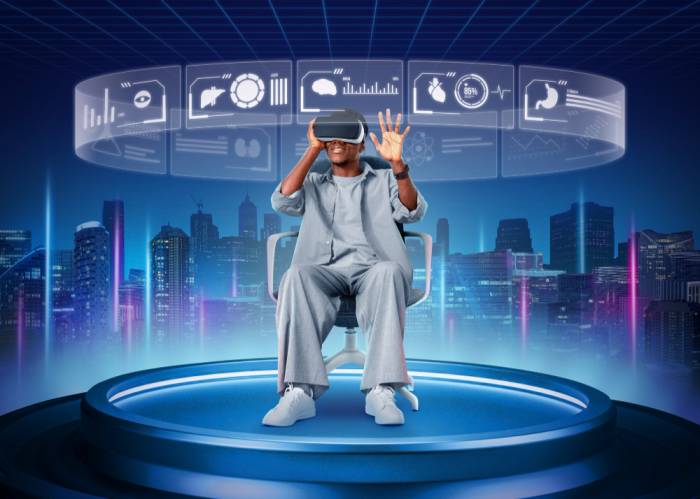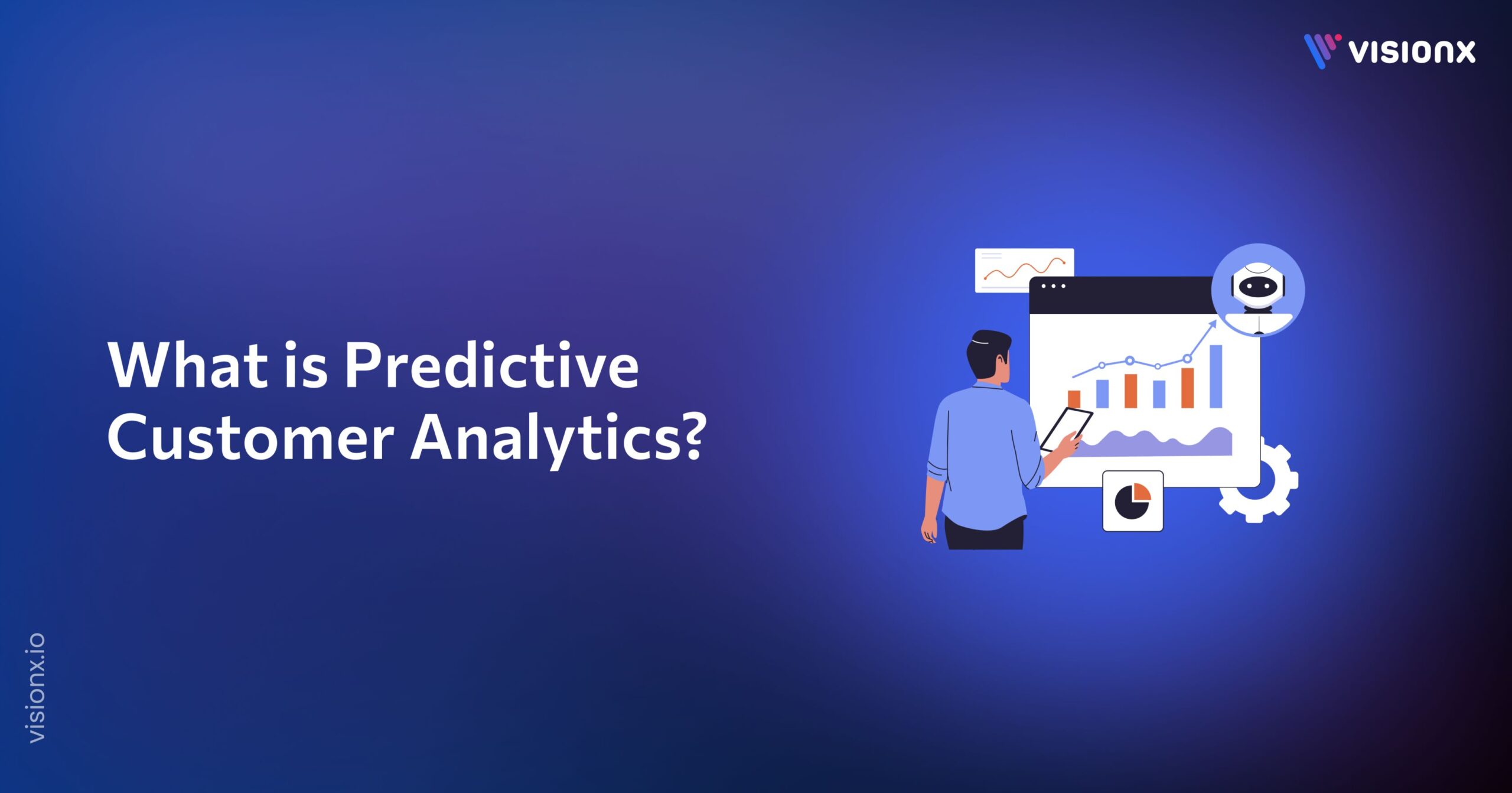The field of software development is expanding exponentially. It feels like yesterday we were struggling with a mobile-first design, and now AI is writing code alongside us! You’re not alone if the new tools and trends constantly make you feel a little lost.
In this blog, we will share 20 exciting and game-changing latest technologies in the software industry. This guide will give you the skills you need to stay ahead and create the software of the future, regardless of your coding experience.
20 Latest Technologies in 2025
These innovative software technologies have the power to completely change the software industry and open up new opportunities for growth and innovation for companies and developers. They can completely transform how software applications are developed and used, opening up a new world of opportunities.
1. AI-powered Code Generation
AI-powered code generation tools, such as GitHub Copilot, utilize advanced machine learning models to assist developers in writing code more efficiently. These tools can suggest complete lines of code or even entire functions based on the context provided by the existing codebase. This speeds up the development process and helps reduce bugs by suggesting proven coding patterns. GitHub Copilot, for instance, is built on OpenAI’s Codex model, which has been trained on a large corpus of public source code and can understand dozens of programming languages. Integrating these AI tools into developers’ daily workflows allows for more focus on strategic problem-solving and creative tasks.
2. Serverless Computing
Serverless computing is a cloud-computing execution model where the cloud provider manages the setup, capacity planning, and server management. This abstraction away from server management allows developers to focus solely on writing code that serves business logic. Platforms like AWS Lambda, Azure Functions, and Google Cloud Functions enable code execution in response to events without requiring developers to manage server instances. This model can lead to cost savings as it typically uses a pay-as-you-go model where you only pay for the compute time you consume. Serverless computing supports faster deployment cycles and scalability, particularly useful for businesses looking to optimize operational costs and efficiency.
3. Progressive Web Apps (PWAs)
Progressive Web Apps (PWAs) are web applications that use modern web capabilities to deliver an app-like experience to users. They are intended to work on any platform using a standards-compliant browser, including desktop and mobile devices. PWAs are particularly noted for their ability to work offline, improve load times, and increase performance. They achieve this through Service Workers for offline support, App Manifests for adding the app to the home screen, and responsive design to ensure the app works on any device. PWAs are increasingly popular because they combine the discoverability of a web app with the capabilities of a native app.
4. Containerization and Microservices
Containerization technology, exemplified by Docker, and microservices architectures are transforming how applications are developed, deployed, and managed. Containers package and isolate applications with their entire runtime environment, making moving the contained app between environments easier. Kubernetes has become the de facto standard for orchestrating these containers, handling containerized applications’ deployment, scaling, and management across clusters of hosts. This approach supports DevOps practices by improving the speed and reliability of continuous delivery. Microservices architectures involve splitting a software application into smaller, independent modules, each responsible for executing a specific part of the application’s functionality. This modularity allows for easier scaling, testing, and maintenance of applications.
5. Low-Code and No-Code Platforms
Low-code and no-code platforms provide visual software development environments that enable users to create applications by dragging and dropping application components, connecting them, and creating application logic through visual interfaces. These platforms dramatically reduce the amount of traditional hand-coding, enabling faster delivery of applications. They democratize application development, enabling non-professional developers (often called “citizen developers”) to build or help build applications supporting digital transformation efforts. Platforms like Microsoft Power Apps, Google AppSheet, and Salesforce’s Lightning platform are popular examples that empower business users to contribute directly to application development without needing a deep background in programming.
6. Multi-Experience Development
Multi-experience development involves designing and developing seamless and consistent user experiences across various digital touchpoints, including mobile, web, wearables, and conversational user interfaces.
This strategy makes use of a variety of technologies, including wearables, voice, chat, augmented reality, and chat, to provide a flawless user experience across all platforms and devices. Tools like Adobe Experience Manager and OutSystems are examples of platforms that facilitate the development of multi-experience applications. This trend is driven by the increasing demand for technology that adapts to the user rather than the other way around, enhancing user satisfaction and engagement.
7. DevSecOps
DevSecOps is an approach to culture, automation, and platform design that integrates security as a shared responsibility throughout the entire IT lifecycle. By embedding security practices and tools at every phase of the software development process, from initial design through integration, testing, deployment, and software delivery, DevSecOps aims to minimize vulnerabilities and bring security closer to IT and business objectives. Tools like Jenkins, GitLab, and JFrog Xray often automate security checks to ensure continuous security. This integration helps organizations comply with data protection regulations and protect sensitive information against emerging cybersecurity threats.
8. Quantum Computing Development
Quantum computing represents a fundamental shift in processing power and efficiency, leveraging the principles of quantum mechanics to perform complex calculations at unprecedented speeds. As the hardware for quantum computers continues to evolve, so does the software infrastructure needed to program these machines. Programming languages like Q# from Microsoft and tools from companies like IBM and Google make quantum programming more accessible to developers. These developments are poised to revolutionize cryptography, optimization, and complex system simulation.
9. Blockchain Development
Blockchain technology is gaining prominence beyond its initial use in cryptocurrencies. It provides a safe, unchanging, transparent, decentralized method of recording transactions. Blockchain is being used by the healthcare, financial, and supply chain management industries to improve transparency and lower costs associated with transactions. Smart contracts, which automatically execute transactions according to predefined rules, are a significant aspect of blockchain development, with platforms like Ethereum leading the way. This technology’s ability to provide secure, transparent, and tamper-proof data management systems drives its adoption across various sectors.
10. Edge Computing
Edge computing involves processing data near the source of data generation rather than relying on a central data center. This is particularly useful for Internet of Things (IoT) devices, mobile computing, and autonomous vehicles, where real-time processing without latency is critical. Edge computing reduces the latency and bandwidth use by processing data closer to where it is needed, enhancing the performance of applications and services. Technologies like 5G are expected to significantly boost edge computing use by improving connectivity and reducing response times. Tools and platforms like AWS Greengrass and Azure IoT Edge are facilitating the deployment of cloud services to edge devices.
11. Artificial Intelligence and Machine Learning (AI/ML)
Integrating AI and Machine Learning Services into applications is a key component of modern software development, allowing for more intelligent and effective workflows. AI algorithms can analyze large datasets to make predictions, automate tasks, and enhance decision-making processes. Machine learning models adapt and learn from past experiences to improve accuracy without human intervention. Applications ranging from customer service automation and predictive analytics to more complex ones like automated medical diagnosis and personalized content recommendation systems frequently use this integration.
12. Voice and Natural Language Processing (NLP)
Voice recognition and NLP technologies enhance human-computer interactions by allowing machines to understand and respond meaningfully to human language. Tools and APIs, such as Google’s Dialogflow, Amazon Lex, and IBM Watson Assistant, allow developers to incorporate voice-activated commands and chatbot functionalities into applications. This is particularly useful in creating more accessible user interfaces and improving customer engagement through virtual assistants and other conversational agents.
13. AR and VR Development
AR and VR technologies are experiencing significant advancements thanks to better hardware and more sophisticated software tools. AR overlays digital information in the real world and is used in mobile apps, for example, for interactive marketing, retail, and real-time navigation. VR creates a fully immersive virtual environment, used extensively in gaming, training simulations, and educational contexts where experiential learning is valuable. Unity and Unreal Engine are popular for developing AR and VR applications, offering powerful graphics and user interaction capabilities.
14. Ethical AI and Responsible Development
As AI technologies become more pervasive, there is an increasing focus on ethical AI and responsible development. This involves designing AI systems that are transparent, unbiased, and fair, ensuring they do not perpetuate or exacerbate social inequalities. Key considerations include data privacy, security, and the socio-ethical implications of AI decisions. Initiatives and frameworks, such as those provided by the Algorithmic Justice League, aim to promote the development of accountable AI systems that serve society’s broader interests.
15. Internet of Things (IoT) Integration
The IoT continues to expand, connecting an ever-growing number of devices to the internet. This integration facilitates the collection and exchange of data across various devices and platforms, leading to smarter ecosystems in homes, cities, and industries. Security and seamless integration are critical as the number of connected devices increases, prompting advancements in IoT platforms and solutions that provide robust security features and efficient data-handling capabilities. Microsoft Azure IoT, AWS IoT Core, and Google Cloud IoT are some platforms enabling developers to build secure and scalable IoT applications.
16. Cloud-Native Technologies
Cloud-native technologies refer to solutions specifically designed to run in a cloud environment, leveraging the full potential of cloud computing, including scalability, flexibility, and high availability. This approach uses microservices architectures, containers, service meshes, immutable infrastructure, and declarative APIs. Tools and platforms such as Kubernetes, Docker, and cloud services from AWS, Azure, and Google Cloud are pivotal in building resilient, manageable, and observable applications. These technologies allow organizations to deploy and scale applications more quickly and efficiently than traditional software architectures.
17. Continuous Integration/Continuous Deployment (CI/CD)
CI/CD is a method of frequently delivering apps to customers by introducing automation into the stages of app development. The main concepts attributed to CI/CD are continuous integration, deployment, and delivery. CI/CD bridges the gaps between development and operation activities and teams by enforcing automation in the building, testing, and deploying applications. Tools like Jenkins, CircleCI, and GitLab CI are commonly used to automate these processes. This not only speeds up workflows but also significantly reduces the potential for human error and improves the overall reliability and quality of the software.
18. Interactive Documentation
Interactive documentation systems enhance how developers interact with and understand APIs by integrating live examples and the ability to test endpoints directly from the documentation. This practice significantly improves the developer experience, making it easier to understand and implement APIs without switching between tools. Swagger UI and Postman provide interactive documentation with features like automatically generated web pages for API documentation and execution within the browser.
19. Fintech Innovations
The fintech sector is at the forefront of adopting and integrating advanced technologies such as AI, machine learning, blockchain, and open banking APIs to transform financial services. Fintech innovations provide more personalized banking experiences, enhanced security, and greater financial inclusion. Technologies like blockchain increase transparency and reduce fraud, while AI helps personalize customer interactions and automate decision processes. Open banking APIs enable third-party developers to create valuable services and tools that build on the banking data of individuals, fostering a more competitive and innovative financial services landscape.
20. Sustainability in Software Development
As environmental concerns become more prominent, a growing emphasis is on sustainably developing software. This includes practices that minimize the energy consumption of running software and reduce the carbon footprint of development and operational processes. Techniques involve optimizing code for energy efficiency, using cloud services more effectively, and selecting technologies and hardware that are environmentally friendly. Moreover, companies are increasingly accountable for the broader impacts of their development practices, leading to more sustainable software lifecycle models.


